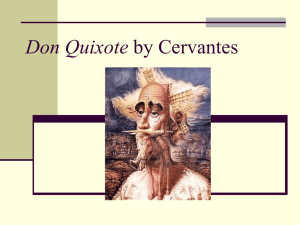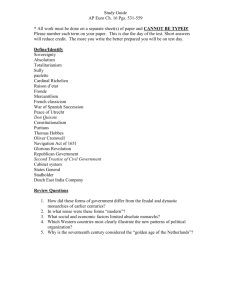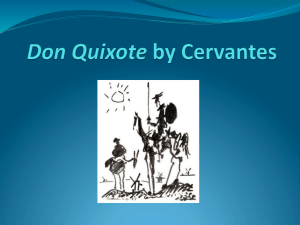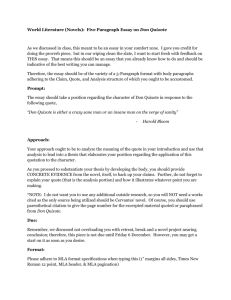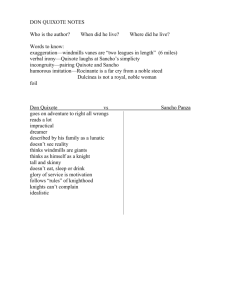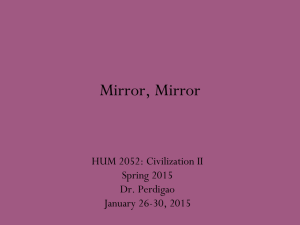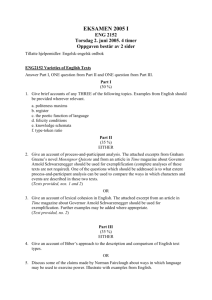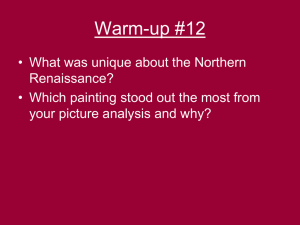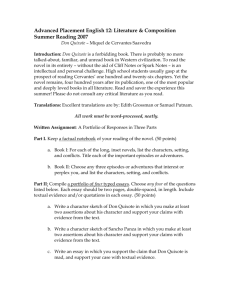M3L1 Notes transcript
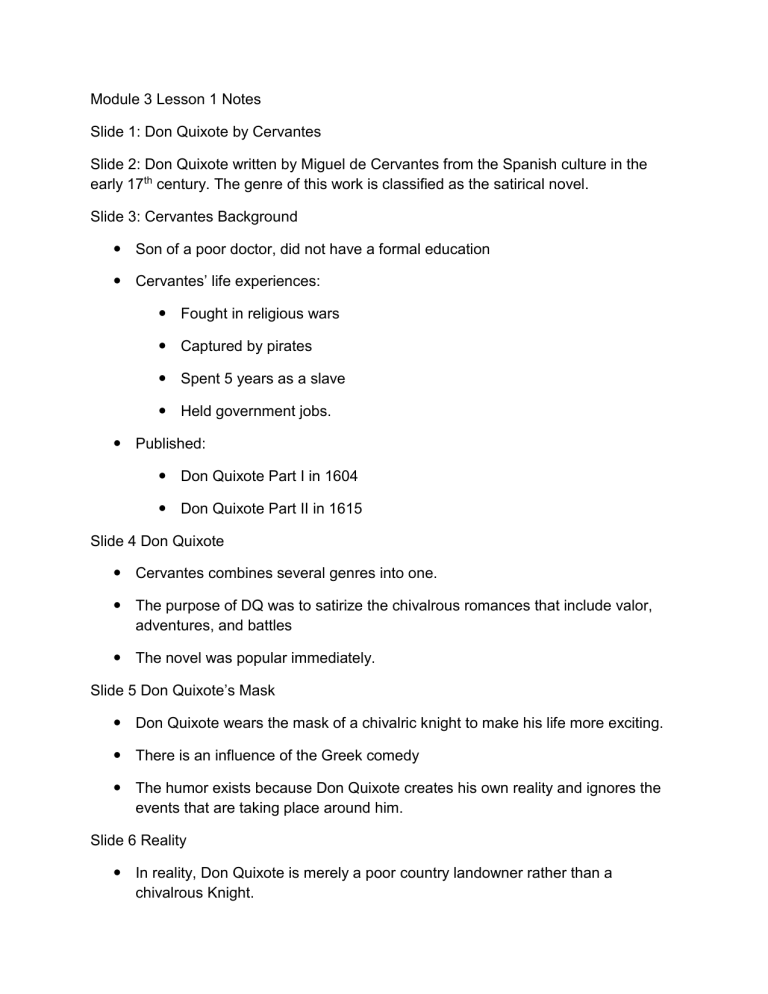
Module 3 Lesson 1 Notes
Slide 1: Don Quixote by Cervantes
Slide 2: Don Quixote written by Miguel de Cervantes from the Spanish culture in the early 17 th century. The genre of this work is classified as the satirical novel.
Slide 3: Cervantes Background
Son of a poor doctor, did not have a formal education
Cervantes’ life experiences:
Fought in religious wars
Captured by pirates
Spent 5 years as a slave
Held government jobs.
Published:
Don Quixote Part I in 1604
Don Quixote Part II in 1615
Slide 4 Don Quixote
Cervantes combines several genres into one.
The purpose of DQ was to satirize the chivalrous romances that include valor, adventures, and battles
The novel was popular immediately.
Slide 5 Don Quixote’s Mask
Don Quixote wears the mask of a chivalric knight to make his life more exciting.
There is an influence of the Greek comedy
The humor exists because Don Quixote creates his own reality and ignores the events that are taking place around him.
Slide 6 Reality
In reality, Don Quixote is merely a poor country landowner rather than a chivalrous Knight.
Don Quixote’s goals are love, adventure, loyalty to valor and generosity, tries to right wrongs, to help those in need, to be full of valor in honor of his Lady (courtly love).
He wants to be recognized for his good deeds.
His insanity is caused by reading too many books about chivalry implying that reading corrupts minds.
Slide 7 Significant Characters
Don Quixote – the main character (tragicomic hero) who wants to save the world
Sancho Panza – Don Quixote’s squire who represents the common man. He is a peasant who grows more confident as the novel progresses.
Dulcinea
– Don Quixote’s ladylove who never physically appears in the novel.
His love for her drives him along on his adventure.
Rocinante – Don Quixote’s barn horse. His is worn out (just like DQ), but very faithful.
Slide 8 Metaphors
There are several metaphors presented in Don Quixote .
A metaphor is the comparison of two unlike things.
For example:
John is a real pig when he eats.
Translation: John is a fast and messy eater.
My father is a rock.
Translation: My father is a strong and reliable person.
Her head was spinning with ideas.
Translation: She has several exciting ideas.
Slide 9 What’s Next?
We will be reading one portion of the novel, Don Quixote.
The passage that has been chosen is the Battle of the Windmills. In this passage, Don Quixote encounters some windmills and sees them a little differently than everyone else.
When reading, be on the lookout for humor, metaphors, and heroic elements.
